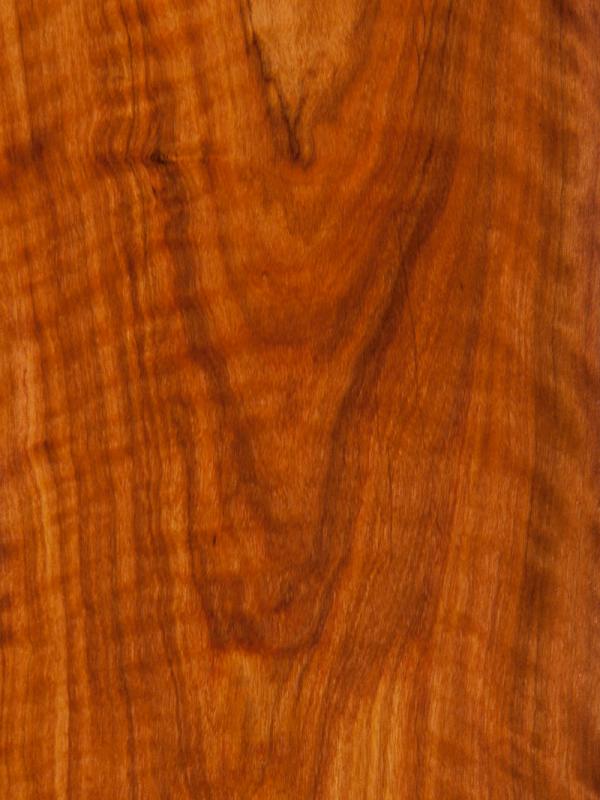
Family: Oleaceae, the olive family.
Origin: It grows in Montane rain forests. It is most common in Kenya and parts of Zaire but less frequent in Uganda and Tanzania.
Other common names: Olmasi, ngwe and musharagi.
The tree: African olivewood may reach heights of 80 to 100 ft. but are usually smaller and has a trunk diameter of 2 to 3 ft. The bole is heavily fluted, rarely straight and about 15 to 30 ft. in length.
Appearance: The heartwood is pale brown with irregular dark gray-brown streaks and the sapwood is pale yellow, up to 2 in. wide and clearly demarcated. The grain is straight or shallowly interlocked and figured and has a fine and even texture. The surface is usually slightly oily.
Density: Average reported specific gravity is 0.72(ovendry weight/green volume), equal to an air-dried weight of 55 pcf. Janka hardness is 2740 pounds of force.
Drying & shrinkage: It dries very slowly with a strong tendency to check and warp. Honeycomb may develop in thick material if dried too rapidly. Movement in service is rated as large. Average reported shrinkage values (green to ovendry) are 4.0% radial and 6.5% tangential.
Working properties: It is difficult to work by hand but it can be planed to a smooth finish and is easy to saw when green. It has excellent turning properties and moderate steam-bending properties. Possible adverse reactions from the dust include irritation to eyes, skin and respiratory system.
Durability: It has a low to moderate durability and is susceptible to termite attack.
Uses: Common uses include furniture, decorative veneers, turnery, flooring and tool handles.